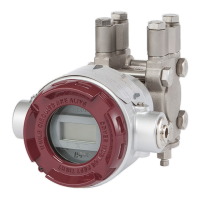2-3
Chapter 2 Installation of this Device
(3) Installation Criteria for Intrinsically Safe Explosion-Proof Models
(Ex ia IIC T4 Ga, Ex ia IIIC T 105 °C Da)
The following are the electric parameters for intrinsically safe explosion-proof models.
• Electric parameters: Ui = 30 V, Ii = 93 mA, Pi = 1 W, Ci = 5 nF, Li = 0.6 mH
The intrinsically safe explosion-proof models are for the following explosive gas and electrical
equipment, and temperature class. Install these models in the hazardous zones shown below that
satisfy the specified temperature condition.
• Explosion class and auto-ignition temperature of target gas: IIC T4
IIC: Indicates an explosive gas group (IIC includes hydrogen) and electric equipment for the gas
in the groupT4: The maximum surface temperature is 135 °C.
• Hazardous location classification: Zone 0, Zone 1, Zone 2
• Temperature: Install the device in an area that satisfies the following temperature conditions.
Ambient temperature: -30 to +60 °C
Temperature of liquid contacting the pressure-receiving part: -20 to +105 °C
* The temperature of the liquid contacting the pressure-receiving part applies to the surface of
the barrier diaphragm on the main unit.
* This product has IP66 and IP67 certifications required by the ATEX intrinsically safe
explosion-proof standard. This product is certified as IP50 by the Technology Institution of
Industrial Safety.
Center body
Barrier diaphragm
Figure 2-1.
Standards compliance: Technical Recommendation of National Institute of Occupational Safety and
Health
Recommended Practices for Explosion-Protected Electrical Installations in General Industries
(2008 technical recommendations conforming to international standards) Part 1 “General rules”
(JNIOSH-TR-46-1:2015)
issued May 1st 2015
Recommended Practices for Explosion-Protected Electrical Installations in General Industries
(2008 technical recommendations conforming to international standards) Part 6 “Intrinsically safe
explosion-proof structure “i” ” (JNIOSH-TR-46-6:2015)
issued May 1st 2015

